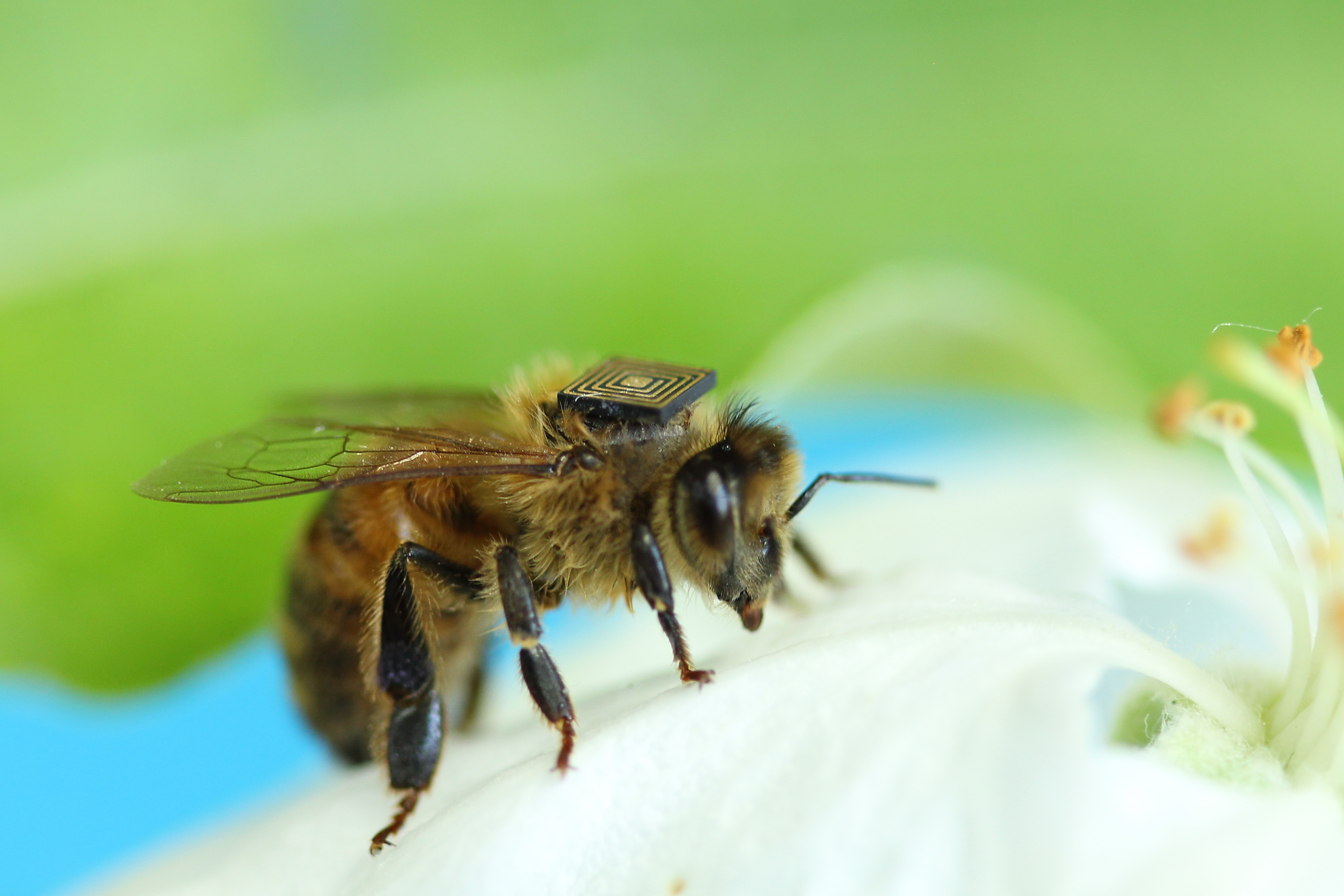By Emily Lehmann
There’s been a buzz around town about our bee research this year, and for good reason.
In a world first, we’ve been microchipping thousands of bees with tiny sensors in Australia and South America to monitor their activity and the way they interact with the environment.
A picture of a bee with a backpack.
A bee. With a backpack. What of it?
We’ve called this ‘swarm sensing’ and it could help gather the information we need to find a solution to the mysterious and devastating decline of bees around the world.
While we’ve been buzzily strapping these tiny sensors on bees in the Amazon in collaboration with Vale Institute of Technology, there has been a swarm of attention around our work back home.
Swarm sensing hit the polls earlier this week, as one of five finalists in The Australian Innovation Challenge’s category for Environment, Agriculture and Food. And, it’s up to the people – that means you – to decide which one of these innovations deserves to win $5000.
A bee hive.
These guys are an important link in the global food chain – and they need our help!
Now, if cute honey bees wearing mini, colour-coordinated ‘backpacks’, isn’t enough to sway your vote, then we’ve gathered a few hot facts about why this work is so critical to get you over the line:
- Around one third of the food we eat relies on bees for pollination.
- By aiding agriculture, honey bees earn an estimated $4-6 billion for Australia every year.
- Wild honey bee populations are dropping drastically or vanishing all together around the world. There are two major problems causing their decline: the varroa mite and the little understood Colony Collapse Disorder
- While there is a real risk, bees in Australia have not been affected by the Varroa mite or Colony Collapse Disorder.
- Parasites, pollution and pesticides are potential factors in the decline of honey bee populations.
To vote CSIRO, visit The Australian Innovation Challenge article and select ‘swarm sensing’ in the poll at the bottom of the page. Go on, #voteCSIRO and do it for the bees!




15th February 2015 at 5:36 pm
yeh I reckon once they tell queen about the new types of pretty light bulbs and queen should come, then she says yes ok ill come then the bee leaves and the other bees say no don’t go and bee goes out to light and then light goes off and thinks where was that light and gets lost and sits there wherever
15th November 2014 at 8:27 am
There have been reports of bees becoming confused and not returning to their hives after smart meters were placed on buildings less than 80 meters from the hives. Microwave (pulse) radiation from smart meters and other WI-FI gadgetry is believed by many to be hazardous to all forms of plant and animal life.